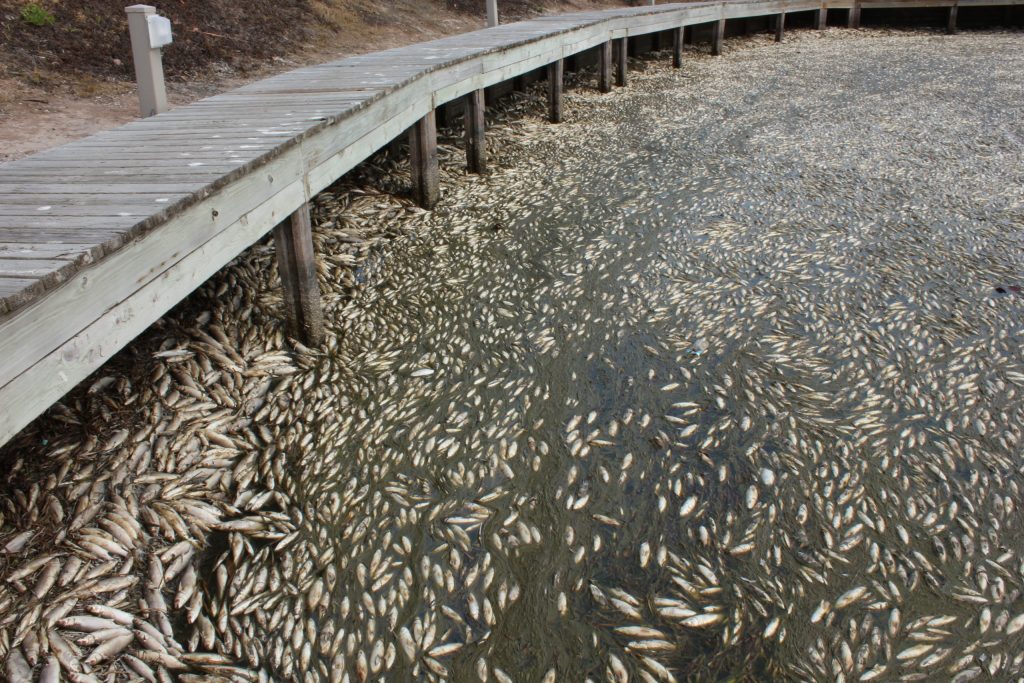Winter weather the week of Feb. 14, 2021 led to fish kill events on the entire Texas coast, with an estimated minimum of 3.8 million fish deaths during the Feb. 2021 freeze event.

This fish kill consisted of at least 61 species. Non-recreational species contributed to 91% of the total mortality in numbers of fish.
This includes species like Silver Perch, Hardhead Catfish, Pinfish, Bay Anchovy and Striped Mullet. While not sought after by most anglers, non-game fish are ecologically important, providing food for larger game fish as well as adding to the overall diversity of Texas Bays.
Recreationally important game species accounted for the other 9% of the total. Of that 9%, the dominant species included Spotted Seatrout (48%), Black Drum (31%), Sheepshead (8%), Sand Seatrout (7%), Red Drum (3%), Gray Snapper (2%), and Red Snapper (<1%).
Both the Upper and Lower Laguna Madre bay systems were hit particularly hard by this event. The Lower Laguna Madre had the highest mortality of Spotted Seatrout with an estimated 104,000 fish killed. That comprised 65% of the total estimated Spotted Seatrout killed and when combined with the Upper Laguna Madre, it comprised 89% of the total estimated Spotted Seatrout mortality along the Texas coast.
Similarly, the Upper Laguna Madre had experienced Black Drum mortality at an estimated 82,600 fish and comprised 78% of the coastwide Black Drum killed.
Now look at some other amazing pictures of this Texn big freeze here…
Historical Comparison
This is not the first freeze to occur in Texas coastal waters. Multiple freeze events during the 1980s killed almost 32 million fish, with the most severe impacts being on the lower coast.
While the February 2021 event impacted a large area of the Texas coast, the overall number of fish killed in this event appears to be lower than any of the three freeze events in the 1980s.
“Using history as a guide, we believe our fishery has the potential to bounce back fairly quickly as it did after the 1980s freeze event. Based on our long-term monitoring, we saw the recovery in terms of numbers of Spotted Seatrout bounce back in approximately two to three years. This does not mean the fish size and age structure were the same as pre-freeze but the overall numbers did return in that timeframe,” said Robin Riechers, Coastal Fisheries Division Director.
However, the Spotted Seatrout mortality in the combined Upper and Lower Laguna Madres is comparable to the events from the 1980’s. Below is a breakdown of each event in the 1980s.
- December 1983: 14.4 million fishes killed with a geographic extent of the entire coast
- February 1989: 11.3 million fishes killed with a geographic extent of East Matagorda Bay south to the Lower Laguna Madre
- December 1989: 6.2 million fishes killed with a geographic extent of the entire coast
The Feb. 2021 freeze event appears to have been larger than any other fish kill event seen since the 1980s, including those in the 1990s and 2000’s. The 1997 freeze event saw 328,000 fishes killed but had a significantly higher percentage of game species killed (56%) than in 2021.
Worst cold weather fish kill since 1980s
“While some areas of the coast and some species of fish were clearly impacted more than others, overall this is the worst freeze related coastal fish kill we have experienced since the 1980’s. More on Texas.gov
Now subscribe to this blog to get more amazing news curated just for you right in your inbox on a daily basis (here an example of our new newsletter).
You can also follow us on Facebook and/ or Twitter. And, by the way you can also make a donation through Paypal. Thank you!











